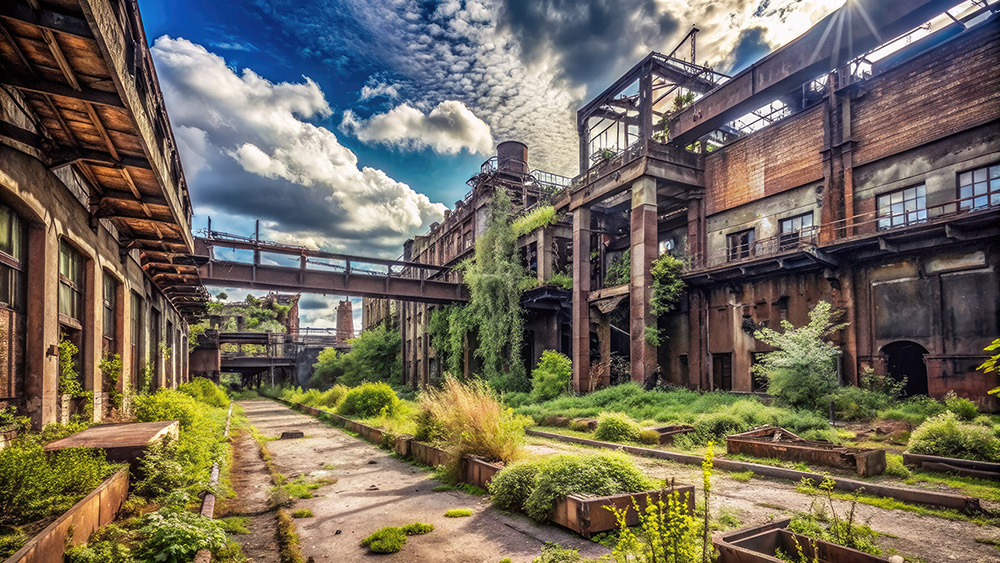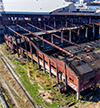For a while, it looked like the golden age of industrial real estate. Institutional capital poured in. Developers raced to grab dirt. And everywhere you looked there was a new million-square-foot cross-dock going up, most notably in the many markets across the U.S. that lack natural constraints. Big boxes, high clear heights, deep trailer courts, and lots of docks. Nobody stopped to ask, “What happens when demand moderates?”
Now we know.
The distribution party changed. We’ve certainly seen big-box industrial development abate over the past 18 months. Retailers are shifting, and some may not survive. Brands that went all in on just-in-time and e-commerce fulfillment have met their demands or have seen the return to brick-and-mortar store fronts, and some occupiers have opted for build-to-suit development to meet logistics’ needs. Vacancy is climbing, though it’s back to historic averages versus the historic lows of the recent past. Spec buildings that once had bidding wars now may be available in some markets. And the real kicker? These buildings were designed for distribution and not easily adaptable for manufacturing.
Power in amps doesn’t translate to power in megawatts.
The overhang wasn’t just about oversupply. It was about overconfidence in a single-use case. The market was moving at a torrid pace, and everyone was chasing the same pot of gold — a large big-box distributor. As rents reached historical highs — and some investors or landlords had unrealistic pro formas — many tenants seeking cost savings opted to consolidate operations from multiple buildings or geographies into one facility that was more efficient. Furthermore, some owners of big-box logistics facilities have demised their assets to meet the needs of occupiers seeking less than 200,000 square feet, with success. For manufacturing users, looking at available speculative warehouse and logistics product is similar to trying to fit a square peg into a round hole due to the complexity of manufacturing space needs.
Manufacturers are kicking tires on some of these sites. The logic makes sense: the buildings are there, the roofs are new, the locations are strong. But here’s the hard truth: converting a spec warehouse into a modern manufacturing plant can be just as difficult as building it to suit.
18
The challenges that seem to be in place are the fact that the power’s not there. The panel capacity, the switchgear, the transformers — all undersized. These buildings were designed for forklifts and conveyor belts, not robotics, CNC machines, and fully automated pick lines. You can’t run a 24/7 high-load operation on a couple thousand amps.
It gets worse. Most developers and brokers speak power in terms of how many amps a building has on site. Manufacturers speak in megawatts. There’s a translation gap, and a lot gets lost in the middle. If you're not careful, you walk into a building thinking it’s plug and play and end up waiting three years for the utility to build out the electrical service that is needed to operate your machinery and equipment.
You can’t fake a power supply or bolt on a rail spur.
It’s not just power. Column spacing, ceiling heights, floor loads, ventilation, loading — manufacturing has its own set of specifications, and most spec distribution buildings do not have those critical location factors. The few that come close? They're gone fast. Everyone’s trying to retrofit the same handful of decent shells.
So what now?
Smart players are starting to look at brownfield — the legacy sites and giant manufacturing facilities originally built in the 1950s or ’60s. Places that already had cranes, have substations on site, have rail spurs and laydown yard space. Sure, they need some TLC. But the bones are good, and they were built for heavy manufacturing.
The next wave of industrial growth may not only come from logistics demand for big-box spec. In many cases, it will be driven by highly specialized manufacturing campuses, built from the ground up or carved out of old steel and glass. You can’t fake a power supply. You can’t bolt on a rail spur. The fundamentals matter again.
Before you fall in love with a shiny new box, ask the right questions. Who built it? What was it built for? What’s the true load capacity? And can it actually support what you’re trying to do?
Because if the answer is no, that pretty box is just another warehouse chasing a use case that is not compatible for a manufacturer.




